- Home
- Arthur Conan Doyle
Sir Nigel
Sir Nigel Read online
SIR NIGEL
By Sir Arthur Conan Doyle
CONTENT
I. THE HOUSE OF LORING
II. HOW THE DEVIL CAME TO WAVERLEY
III. THE YELLOW HORSE OF CROOKSBURY
IV. HOW THE SUMMONER CAME TO THE MANOR HOUSE OF TILFORD
V. HOW NIGEL WAS TRIED BY THE ABBOT OF WAVERLEY
VI. IN WHICH LADY ERMYNTRUDE OPENS THE IRON COFFER
VII. HOW NIGEL WENT MARKETING TO GUILFORD
VIII. HOW THE KING HAWKED ON CROOKSBURY HEATH
IX. HOW NIGEL HELD THE BRIDGE AT TILFORD
X. HOW THE KING GREETED HIS SENESCHAL OF CALAIS
XI. IN THE HALL OF THE KNIGHT OF DUPLIN
XII. HOW NIGEL FOUGHT THE TWISTED MAN OF SHALFORD
XIII. HOW THE COMRADES JOURNEYED DOWN THE OLD, OLD ROAD
XIV. HOW NIGEL CHASED THE RED FERRET
XV. HOW THE RED FERRET CAME TO COSFORD
XVI. HOW THE KING'S COURT FEASTED IN CALAIS CASTLE
XVII. THE SPANIARDS ON THE SEA
XVIII. HOW BLACK SIMON CLAIMED FORFEIT FROM THE KING OF SARK
XIX. HOW A SQUIRE OF ENGLAND MET A SQUIRE OF FRANCE
XX. HOW THE ENGLISH ATTEMPTED THE CASTLE OF LA BROHINIERE
XXI. HOW THE SECOND MESSENGER WENT TO COSFORD
XXII. HOW ROBERT OF BEAUMANOIR CAME TO FLOERMEL
XXIII. HOW THIRTY OF JOSSELIN ENCOUNTERED THIRTY OF FLOERMEL
XXIV. HOW NIGEL WAS CALLED TO HIS MASTER
XXV. HOW THE KING OF FRANCE HELD COUNSEL AT MAUPERTUIS
XXVI. HOW NIGEL FOUND HIS THIRD DEED
XXVII. HOW THE THIRD MESSENGER CAME TO COSFORD
INTRODUCTION
Dame History is so austere a lady that if one, has been so ill-advisedas to take a liberty with her, one should hasten to make amends byrepentance and confession. Events have been transposed to the extent ofsome few months in this narrative in order to preserve the continuityand evenness of the story. I hope so small a divergence may seem avenial error after so many centuries. For the rest, it is as accurate asa good deal of research and hard work could make it.
The matter of diction is always a question of taste and discretion in ahistorical reproduction. In the year 1350 the upper classes still spokeNorman-French, though they were just beginning to condescend to English.The lower classes spoke the English of the original Piers Plowman text,which would be considerably more obscure than their superiors' French ifthe two were now reproduced or imitated. The most which the chroniclescan do is to catch the cadence and style of their talk, and to infusehere and there such a dash of the archaic as may indicate their fashionof speech.
I am aware that there are incidents which may strike the modern readeras brutal and repellent. It is useless, however, to draw the TwentiethCentury and label it the Fourteenth. It was a sterner age, and men'scode of morality, especially in matters of cruelty, was very different.There is no incident in the text for which very good warrant may not begiven. The fantastic graces of Chivalry lay upon the surface of life,but beneath it was a half-savage population, fierce and animal, withlittle ruth or mercy. It was a raw, rude England, full of elementalpassions, and redeemed only by elemental virtues. Such I have tried todraw it.
For good or bad, many books have gone to the building of this one. Ilook round my study table and I survey those which lie with me at themoment, before I happily disperse them forever. I see La Croix's"Middle Ages," Oman's "Art of War," Rietstap's "Armorial General," De laBorderie's "Histoire de Bretagne," Dame Berner's "Boke of St. Albans,""The Chronicle of Jocelyn of Brokeland," "The Old Road," Hewitt's"Ancient Armour," Coussan's "Heraldry," Boutell's "Arms," Browne's"Chaucer's England," Cust's "Scenes of the Middle Ages," Husserand's"Wayfaring Life," Ward's "Canterbury Pilgrims;" Cornish's "Chivalry,"Hastings' "British Archer," Strutt's "Sports," Johnes Froissart,Hargrove's "Archery," Longman's "Edward III," Wright's "DomesticManners." With these and many others I have lived for months. If I havebeen unable to combine and transfer their effect, the fault is mine.
ARTHUR CONAN DOYLE.
"UNDERSHAW," November 30, 1905.

 The Lost World
The Lost World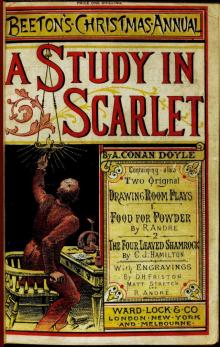 A Study in Scarlet
A Study in Scarlet The Firm of Girdlestone
The Firm of Girdlestone The Cabman's Story
The Cabman's Story The Adventures of Sherlock Holmes
The Adventures of Sherlock Holmes Round the Fire Stories
Round the Fire Stories His Last Bow: An Epilogue of Sherlock Holmes
His Last Bow: An Epilogue of Sherlock Holmes Micah Clarke
Micah Clarke The Exploits of Brigadier Gerard
The Exploits of Brigadier Gerard The Gully of Bluemansdyke, and Other stories
The Gully of Bluemansdyke, and Other stories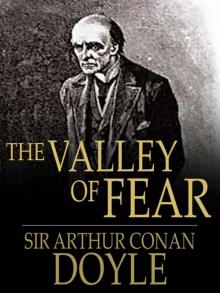 The Valley of Fear
The Valley of Fear The Last of the Legions and Other Tales of Long Ago
The Last of the Legions and Other Tales of Long Ago The Dealings of Captain Sharkey, and Other Tales of Pirates
The Dealings of Captain Sharkey, and Other Tales of Pirates The Hound of the Baskervilles
The Hound of the Baskervilles The Great Shadow and Other Napoleonic Tales
The Great Shadow and Other Napoleonic Tales The Adventure of the Dying Detective
The Adventure of the Dying Detective The Man from Archangel, and Other Tales of Adventure
The Man from Archangel, and Other Tales of Adventure The Poison Belt
The Poison Belt The Last Galley; Impressions and Tales
The Last Galley; Impressions and Tales The Adventure of Wisteria Lodge
The Adventure of Wisteria Lodge The White Company
The White Company The Mystery of Cloomber
The Mystery of Cloomber The Adventure of the Bruce-Partington Plans
The Adventure of the Bruce-Partington Plans The Adventure of the Cardboard Box
The Adventure of the Cardboard Box Danger! and Other Stories
Danger! and Other Stories Sir Nigel
Sir Nigel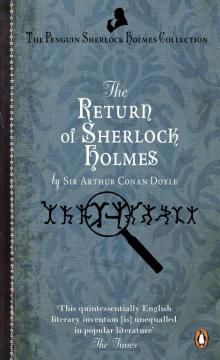 The Return of Sherlock Holmes
The Return of Sherlock Holmes The Adventure of the Devil's Foot
The Adventure of the Devil's Foot The Adventure of the Red Circle
The Adventure of the Red Circle The Memoirs of Sherlock Holmes
The Memoirs of Sherlock Holmes The Adventure of the Yellow Face
The Adventure of the Yellow Face The Adventure of the Norwood Builder
The Adventure of the Norwood Builder Mysteries of Sherlock Holmes
Mysteries of Sherlock Holmes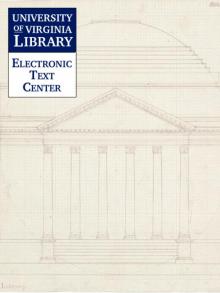 The Adventure of the Missing Three-Quarter
The Adventure of the Missing Three-Quarter The Adventure of the Final Problem
The Adventure of the Final Problem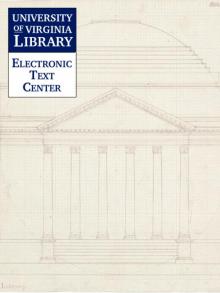 A Scandal in Bohemia
A Scandal in Bohemia His Last Bow shssc-4
His Last Bow shssc-4 Beyond The City
Beyond The City The Adventure of the Gloria Scott
The Adventure of the Gloria Scott The Parasite
The Parasite The Land Of Mist pcs-3
The Land Of Mist pcs-3 The Adventure of the Musgrave Ritual
The Adventure of the Musgrave Ritual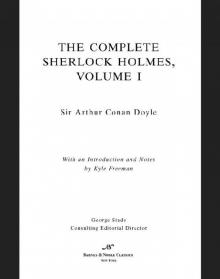 The Complete Sherlock Holmes, Volume I (Barnes & Noble Classics Series)
The Complete Sherlock Holmes, Volume I (Barnes & Noble Classics Series) The Adventure of the Stockbroker's Clerk
The Adventure of the Stockbroker's Clerk The Adventure of the Copper Beeches
The Adventure of the Copper Beeches The New Annotated Sherlock Holmes
The New Annotated Sherlock Holmes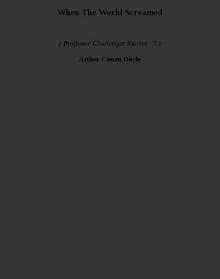 When The World Screamed pcs-5
When The World Screamed pcs-5 The Adventure of the Six Napoleons
The Adventure of the Six Napoleons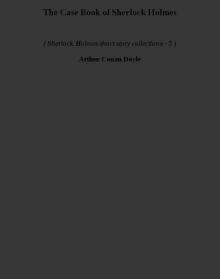 The Case Book of Sherlock Holmes shssc-5
The Case Book of Sherlock Holmes shssc-5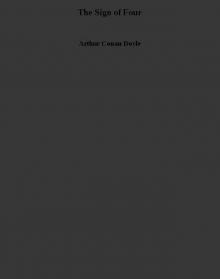 The Sign of Four
The Sign of Four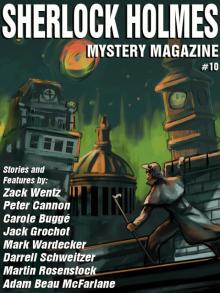 Sherlock Holmes Mystery Magazine #10
Sherlock Holmes Mystery Magazine #10 The Adventures of Brigadier Gerard
The Adventures of Brigadier Gerard The Adventure of the Second Stain
The Adventure of the Second Stain The Adventure of the Engineer's Thumb
The Adventure of the Engineer's Thumb The Mummy Megapack
The Mummy Megapack The Disintegration Machine pcs-4
The Disintegration Machine pcs-4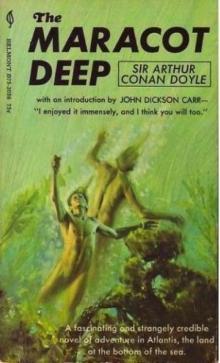 The Maracot Deep
The Maracot Deep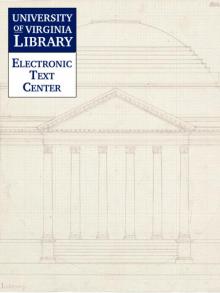 The Five Orange Pips
The Five Orange Pips The Adventure of the Crooked Man
The Adventure of the Crooked Man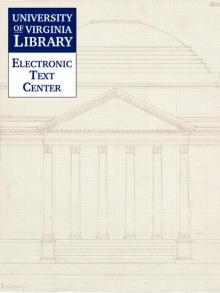 The Adventure of the Blue Carbuncle
The Adventure of the Blue Carbuncle The Adventure of Silver Blaze
The Adventure of Silver Blaze The Adventure of the Solitary Cyclist
The Adventure of the Solitary Cyclist The Adventure of the Naval Treaty
The Adventure of the Naval Treaty Sherlock Holmes. The Complete Stories
Sherlock Holmes. The Complete Stories The Adventures of Sherlock Holmes (sherlock holmes)
The Adventures of Sherlock Holmes (sherlock holmes) The Adventure of the Empty House
The Adventure of the Empty House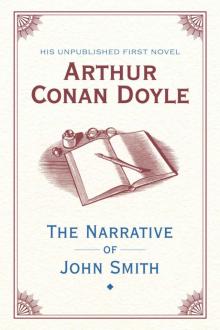 The Narrative of John Smith
The Narrative of John Smith The Return of Sherlock Holmes (sherlock holmes)
The Return of Sherlock Holmes (sherlock holmes) The New Revelation
The New Revelation A Study in Scarlet (sherlock holmes)
A Study in Scarlet (sherlock holmes) The Vital Message
The Vital Message Sherlock Holmes Complete Collection
Sherlock Holmes Complete Collection Round the Red Lamp
Round the Red Lamp The Boscombe Valley Mystery
The Boscombe Valley Mystery The Adventure of the Beryl Coronet
The Adventure of the Beryl Coronet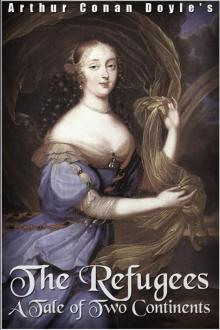 The Refugees
The Refugees The Adventure of the Three Students.
The Adventure of the Three Students.